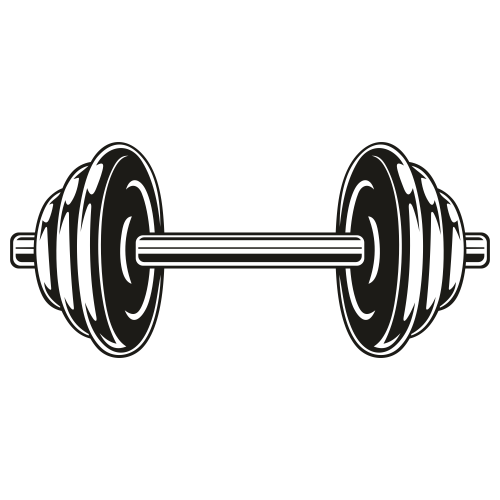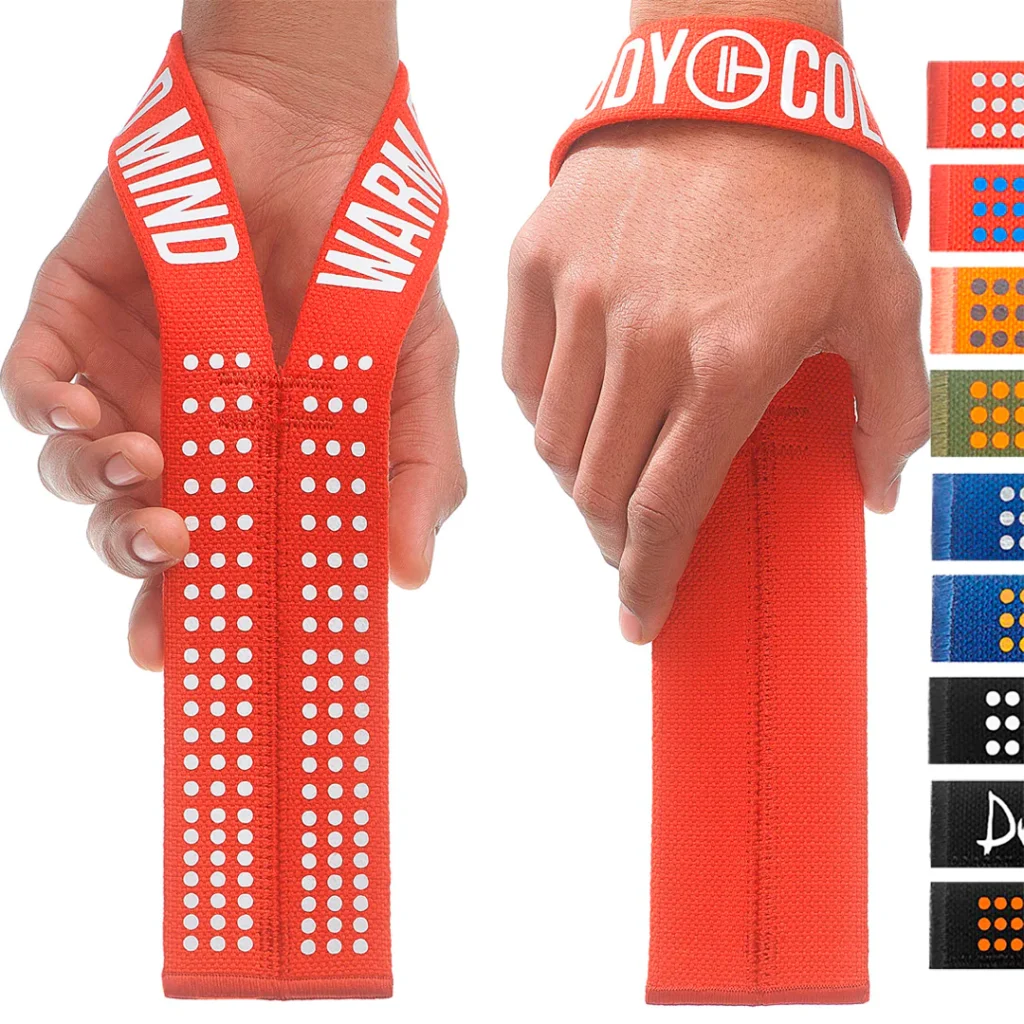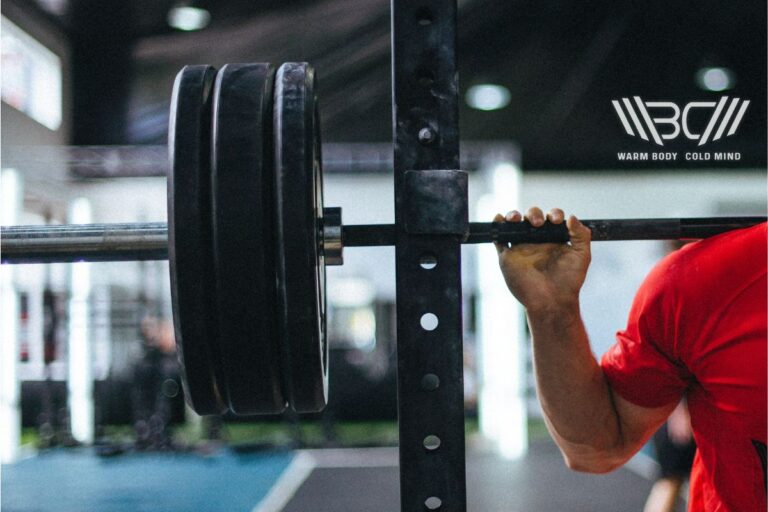Straps For Pull-Ups: When And How To Use Them?
Reviewed by Oleksiy Torokhtiy
Pull-ups are regarded as one of the most effective and well-rounded upper-body exercises. However, many individuals, especially beginners, struggle with maintaining their grip on the bar. Because of this, some athletes are turning to using wrist straps for pull-ups.
But are they worth it, and is using them solely beneficial, or could there be some downsides as well? This article will discuss who should use pull-up straps, their advantages, when to use or not to use them, etc. But first, a summary:
Some athletes use wrist straps for pull-ups to make the exercise easier. Doing pull-ups with straps can help overcome grip limitations, making gripping the bar more comfortable and resulting in higher rep numbers and even cleaner exercise techniques.

What Are Lifting Straps For Pull-Ups And What Are They For?
Lifting straps were originally designed to assist in weightlifting exercises, such as deadlifts, by enhancing the user’s ability to hold onto the barbell. By wrapping the strap around the wrist and then the barbell, you lower the demand placed on your hands and forearms by redistributing weight pressure. The reduced tension in your hands allows you to maintain your grip on the barbell for a longer duration and lift heavier weights without your grip failing.
So, can you use lifting straps for pull-ups? Yes, the same principle applies. A lot of people find that when they do pull-ups and the first thing that truly fails is their grip. That can be quite frustrating, as you end up feeling like you could do more reps and have a cleaner exercise technique if you could just hold on for longer. For this reason, athletes turned to using lifting straps for pull-ups — and found that it works.
But is using wrist straps for pull-ups a straight positive or are there downsides as well? Some athletes argue that using them is cheating and somewhat defeats the purpose of the exercise, while others say you should do what feels best for you. Here are some reasons you might want to try pull-ups with straps:

Olympic Weightlifting Straps V1
Enhance your weightlifting experience with premium Warm Body Cold Mind Olympic lifting straps.
1. Enhances Your Grip
As discussed so far, the main reason why you should try arm straps for pull-up bar exercises is to alleviate the stress from your grip. A study looking at the effects of using straps when doing pull-ups showed they significantly lower activation in the wrist extensors and wrist flexors, leading to far fewer instances of grip fatigue.
That not only lets you hold onto the bar for longer but also protects you from potential injuries such as wrist sprains or tendon pulls, among others. However, there is a flipside to that coin that we will discuss later.
2. No Exercise Drawbacks
Unless you’re doing pull-ups specifically to train your grip strength and practice carrying your body weight, using pull-up straps does not reduce the effectiveness of the exercise for shoulder and back development. The study referenced earlier also showed straps do not lower recruitment of the latissimus dorsi and infraspinatus — the main muscles exercised by pull-ups.
3. Increased Muscle Hypertrophy
Pull-ups are among the most popular upper body exercises due to their high muscle recruitment. By getting in more reps and sets of pull-ups, you can end up exercising your upper body to a greater extent. This can result in greater and faster muscle growth (hypertrophy), particularly in major back, shoulder, and arm muscles. If your goal is raw upper-body strength and/or a better-looking physique, pull-ups are a great choice of exercise.

Who Should Use Lifting Straps For Pull-Ups?
For the majority of athletes, using straps for pull-ups comes down to personal preference. That said, here are examples of who should consider using them:
1. Pull-Up Beginners
Pull-ups can be quite challenging to do, especially if you don’t have prior experience with exercise. People who are just starting with pull-ups can benefit from using wrist straps without losing crucial upper-body development. By making the exercise easier on the hands (when it is a limiting factor) and more focused on back and shoulder exercise, which is typically the reason people take on pull-ups, novices can get more reps and sets in and achieve faster initial results.
2. People With Grip Limitations
Some people have physical limitations preventing them from holding on to the bar. For example, due to chronic pain in the wrist or hand caused by medical conditions like tendonitis, tenosynovitis, arthritis, and others. Anatomy can also play a role in your ability to grip the standard pull-up bar. For example, female athletes with smaller hands may find the bar too thick.
3. Athletes Recovering From Injuries
Ideally, you want to prevent injury instead of having to work out through it. Wrist straps can help in that as well, but if you find yourself with a hand or wrist injury causing you problems with pull-ups, consider using straps.
In certain (and we mean in certain 🙂) situations, it can help reduce pain, and you might find that it does not disrupt the recovery process and allow you to keep doing some pull-ups or work on a technique. What is important if there was a trauma or injury (broken tendon, muscle, bone) be sure you are consulting everything with your healthcare provider and physio.
Use of straps must help you with training and the last thing we want is to do any harm, make injury worse or/and delay recovery.

Who Should Not Use Pull-up Straps?
So far, we’ve discussed the benefits of using lifting straps for pull-ups and there seem to be no downsides to them. But there are also instances where using them may not be ideal, because over-reliance on wrist straps can lead to weaker grip in the future. Aside from this not being best result for general population there are situations when it’s actually crucial factor, for example:

Pro Tip:
1. Athletes Needing Grip Strength
Athletes who practice sports where grip strength is paramount to performance will benefit more from sticking to raw pull-ups. This is especially true for disciplines like rock climbing, whether indoor or outdoor, where fully understanding grip limitation is the difference between success and failure. However, this also includes sports where holding on to an object or person is important. For example, football, handball, martial arts, and even racket sports like tennis.
2. Competitive Athletes
Pull-ups are part of many fitness competitions where using straps either isn’t allowed or there’s simply no time to put them on and off between exercises. This not only includes cross-training or similar training circuits but also physical assessment tests for first-responder jobs, among other things. For example, police or military fitness tests around the world tend to have pull-ups as part of the mandatory course you need to pass.
Subscribe!
The latest reviews of must-have home gym training equipment, apparel, and supplements that will enhance your performance and bring you new results.
How To Use Lifting Straps For Pull-ups?
Here are some tips for using arm straps for pull-up bar exercises:
1. How To Wrap Them?
Here’s a step-by-step guide to wrapping your straps for pull-ups:
Prepare the Straps:
Wrist straps consist of two parts — the strap itself and the opening at the top. Begin by inserting the strap through the opening to create a loop, but don’t tighten it yet.
Looping the Straps:
You have two straps, one for each arm. Loop one strap from one side and the other from the opposite side.

Securing Around the Wrist:
Slide your hand through the loop, then pull on the strap to wrap it around your wrist. The fit should be snug but comfortable enough to allow free wrist rotation.
Positioning the Strap:
The long end of the strap should run between your thumb and index finger. This also tells that you’ve selected the correct hand for each strap.
Wrapping Around the Bar:
Now, take the loose end of the strap and wrap it around the bar. Tighten it by rotating it like you’d like to accelerate on a motorcycle and regrip. For beginners it may take a few attempts before you get it correct.
2. Start From An Elevated Surface
Depending on your height and the height of the pull-up bar, it may be difficult to reach and wrap your straps around. If that’s the case, use a stable surface like a plyometric box or weight bench to stand on.
Straps We Recommend – Warm Body Cold Mind Weight Lifting Wrist Straps V1
If you’re looking for a pair of high-quality wrist straps that won’t break the bank, try our Warm Body Cold Mind Lifting Straps V1.
They are fully designed by former Olympic athlete Oleksiy Torokhtiy from first-hand competitive weightlifting experience at the highest level. Made from 100% cotton, the natural material wraps comfortably around your hand without digging into, scratching, or rashing your skin.
Doubly stitched to prevent tears, the straps can withstand a whopping 300 kg/660 lbs maximum capacity — perfect for weightlifting, powerlifting, cross-training, rowing, pull-ups, and more. Suitable for beginners or experienced athletes, with 11 color options to match your style.
Another great thing – with WBCM straps you can skip points 1 and 2 from our guide!
FAQ
Should You Use Straps On Lat Pulldown Exercises?
You can do the lat pulldown with straps if it makes your grip feel more comfortable. However, studies have shown using straps when performing lateral pulldowns does not affect your maximum capacity, number of repetitions, or muscle recruitment.
Can You Use Strap For Pull-Ups?
You can use wrist straps for pull-ups, however, make sure you don’t confuse straps for pull-ups with regular wrist wraps. Straps are meant to be wrapped around the bar (or object you’re lifting/pulling), while wraps only stabilize the wrist in place.
Can You Use Figure 8 Straps for Pull-Ups?
Yes, Figure 8 straps are quite versatile, and you can use them for many exercises that utilize the pull motion. These include, but are not limited to rowing, weightlifting, pulldowns, and pull-ups.
Conclusion
Pull-ups are some of the best, most well-rounded upper-body exercises you can do. However, many people find their grip strength to be a limiting factor in how many pull-ups they can do.
For this reason, more and more athletes are turning to wrist straps for pull-ups, to alleviate some of the pressure from their forearms and hands and focus on developing their back, shoulders, and arms. If you’re looking for a pair of quality pull-up straps, we recommend the Warm Body Cold Mind Weight Lifting Wrist Straps V1.
Do you practice pull-ups? What’s your favorite pull-up variation? Let us know in the comments and remember to follow our social media pages for more valuable fitness content.
References:
- Guillermo Escalante, Casey Chaney, Sandra Stuckey, Paul H. Alvarez, Nicole C. Dabbs, “The effects of Versa Gripps® during pull-ups on surface electromyography in
strength trained males,” Medicina Sportiva 9, no. 3 (2015), 2601-2608 - Ivan Jukic, Amador García-Ramos, Jiří Baláš, Jan Malecek, Dan Omcirk, James J Tufano, “Ergogenic effects of lifting straps on movement velocity, grip strength, perceived exertion and grip security during the deadlift exercise,” Physiology & Behavior 229, 113283 (2021)
- Peter Ronai, Eric Scibek, “The Pull-up,” Strength and Conditioning Journal 36, no. 3 (2014), 88-90
- Valério DF, Berton R, Barbieri JF, Calzavara J, De Moraes AC, Barroso R., “The effects of lifting straps in maximum strength, number of repetitions and muscle activation during lat pull-down,” Sports Biomechanics 20, no. 7 (2021),:858-865.
- “What You Should Know About Any Military Physical Fitness Test”, military.com
https://www.military.com/military-fitness/fitness-test-prep/physical-fitness-test-standards (accessed Sep 22, 2023)
Author: Jacek Szymanowski
Performance architect, S&C movement specialist.
Jacek Szymanowski is a highly respected sports nutrition expert with a Master’s degree in Biotechnology. His innovative approach combines lifting and fighting strategies to help athletes optimize their performance. As a Strength and Conditioning Movement Specialist, he is dedicated to reducing injuries in athletes. His specialist training in Nutrition for Athletes equips him to provide expert advice on dietary habits and nutrition for peak performance.
Reviewed by: Oleksiy Torokhtiy
Olympic Weightlifting Champion
Oleksiy Torokhtiy is an Olympic gold medalist in weightlifting and a prominent coach. Born in Ukraine, he has degrees in Physical Education and Engineering and is currently pursuing a Ph.D. in Sports Science. He’s known for his online training programs and masterclasses that have helped many athletes around the world. He is also a successful social media influencer and the founder of the international sportswear brand “Warm Body Cold Mind”.












I’m just starting to train 1-2 days a week, and since I’m a beginner, I’m interested in everything. I don’t always have time to go to the gym, so I repeat some exercises from YouTube or articles. Your article really interested me. I’ve already subscribed to your newsletter and will be waiting for your articles.